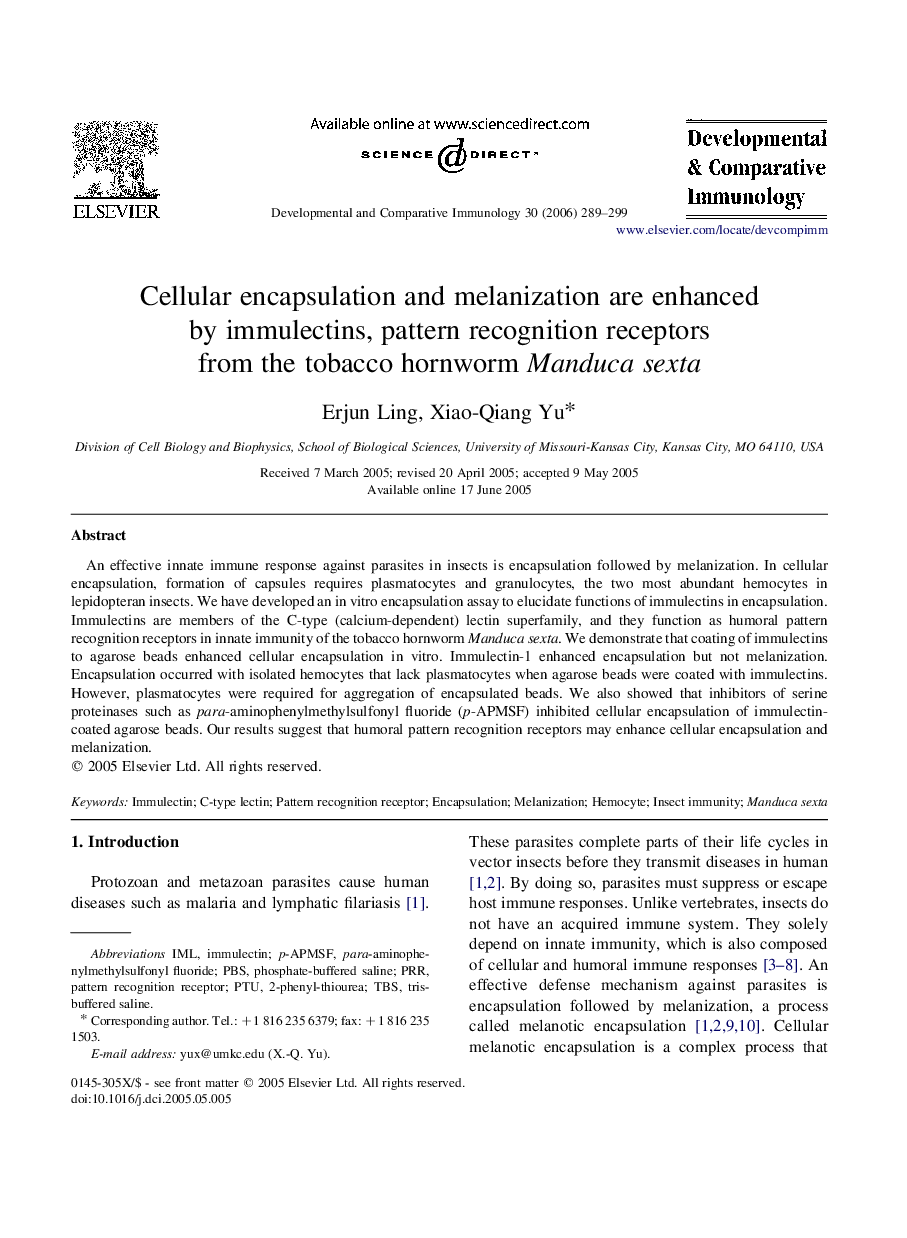| Article ID | Journal | Published Year | Pages | File Type |
|---|---|---|---|---|
| 2430539 | Developmental & Comparative Immunology | 2006 | 11 Pages |
An effective innate immune response against parasites in insects is encapsulation followed by melanization. In cellular encapsulation, formation of capsules requires plasmatocytes and granulocytes, the two most abundant hemocytes in lepidopteran insects. We have developed an in vitro encapsulation assay to elucidate functions of immulectins in encapsulation. Immulectins are members of the C-type (calcium-dependent) lectin superfamily, and they function as humoral pattern recognition receptors in innate immunity of the tobacco hornworm Manduca sexta. We demonstrate that coating of immulectins to agarose beads enhanced cellular encapsulation in vitro. Immulectin-1 enhanced encapsulation but not melanization. Encapsulation occurred with isolated hemocytes that lack plasmatocytes when agarose beads were coated with immulectins. However, plasmatocytes were required for aggregation of encapsulated beads. We also showed that inhibitors of serine proteinases such as para-aminophenylmethylsulfonyl fluoride (p-APMSF) inhibited cellular encapsulation of immulectin-coated agarose beads. Our results suggest that humoral pattern recognition receptors may enhance cellular encapsulation and melanization.
